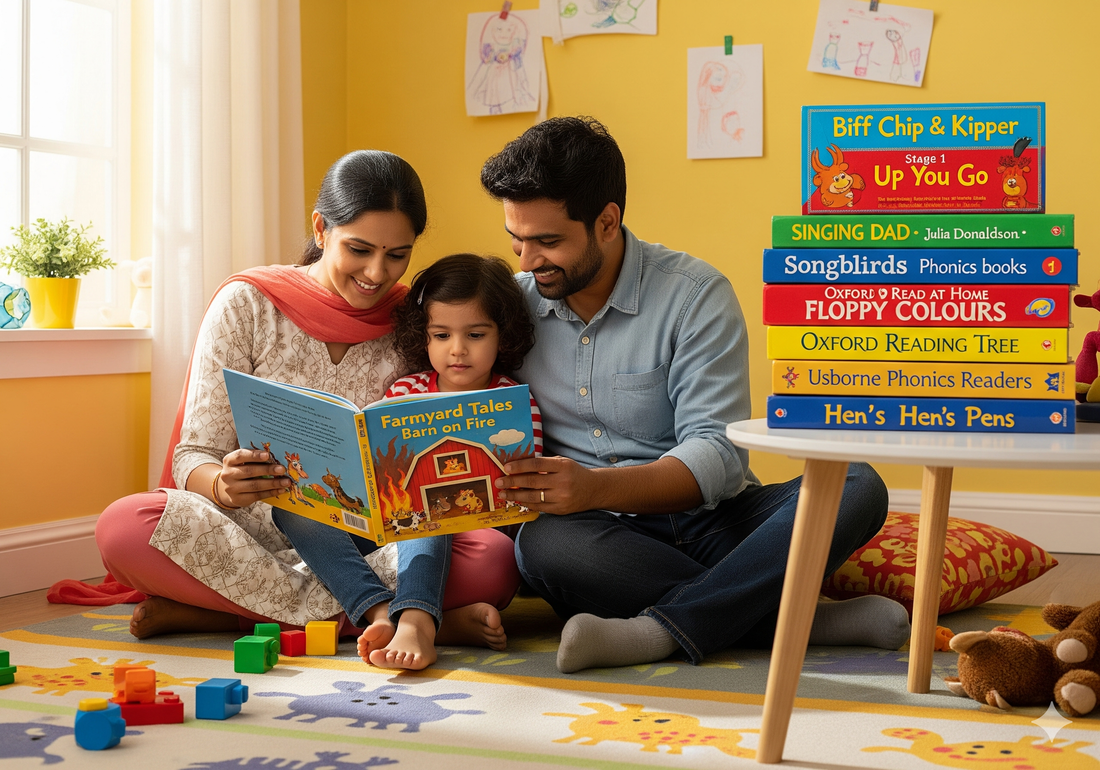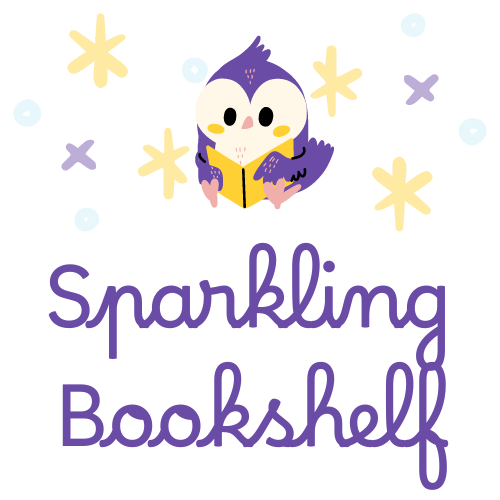
From ABCs to Reading: Become Independent Reader With Phonics
Watching your little one take their first steps into the world of reading is one of the most exciting parts of being a parent. But sometimes, all the different methods and terms can feel a little overwhelming, right? That’s where a little guidance on phonics comes in. It's a key that unlocks the door to a lifelong love of reading. This guide is here to show you how fun and simple it can be, with tips on finding the best phonics books for your child's first steps. We’ll show you why phonics books for kids aren’t just tools, they’re a source of endless joy and discovery.
What are phonics? And why are they so important?
Phonics is a way to teach children how to read by helping them understand the link between letters and their sounds. It focuses on breaking words down into their smallest sound units, called phonemes, so kids can "decode" and read words on their own. When children discover that the letter “a” can sound like “apple,” or that “sh” makes the “shhh” sound, they begin to build confidence and learn to read on their own.
That’s where phonics books come in. From playful phonics sound books that let kids hear the sounds, to gentle phonics story books that weave learning into fun tales, these tools make reading feel less like a lesson and more like a game. Parents love jolly phonics books and phonics books for beginning readers because they are easy to follow and keep little ones engaged.
How Phonics Storybooks Enhance Learning and Language Skills?
1. Learning is a Story, Not a Lesson

Instead of a dry drill, phonics books use engaging plots and relatable characters, for example like the Dr Seuss Cat in the Hat . It teaches kids to read by using a step-by-step approach that connects letter sounds to simple, rhyming words in engaging and playful stories. As your child gets wrapped up in the story, they are subconsciously practicing phonetic patterns, making the process of learning to read feel more like a grand adventure. This approach helps them build a solid foundation in a fun way.
2. Encourages Active Participation
A key benefit of phonics story books is how they encourage your little one to be a part of the action. By sounding out words on their own, they become active participants in the reading process. Such as with Oxford Floppy’s Colours book, teaches kids phonics by repeatedly using simple, rhyming words like "blue shoe" or "green bean" to help them hear and recognize letter sounds in a fun, story-based context.
3. Naturally Builds Vocabulary
These phonics learning books do more than just teach sounds. They introduce new vocabulary naturally within a familiar story setting. As your child encounters new words in a meaningful context, their comprehension grows right alongside their vocabulary. This makes finding a great English phonics book a valuable step in their early language development.
Also Read: 5 Tips By Julia Donaldson to Engage Kids in Reading
How to Introduce Phonics to Kids at Home?
Let’s break it down into simple ways you can introduce phonics at home, and how some of the best phonics books fit naturally into your routine.
1. Make Worksheets Fun and Simple
Worksheets may sound boring, but for kids, they can actually be playful. Keep it light, tracing letters, circling sounds, or coloring pictures that match with letters. Think of it as doodling with purpose.
The Finger Phonics by Sue Lloyd series is brilliant here. Each book introduces letters through clear visuals, simple words, and little activities. They make identifying letter sounds feel like a game. For parents, it’s like having a built-in guide that matches perfectly with worksheets at home.
2. Turn Phonics Games Into Everyday Play
Games make everything stick faster. You don’t need anything fancy, matching sounds with objects around the house works wonders. For example, “b” for ball, “c” for cup.
The Usborne Phonics Readers are a great choice here. They’re colorful, filled with silly rhymes, and get kids laughing while they practice. Each story highlights specific sounds, so you can use them as a springboard for games. Say you’re reading “Shark in the Park”, pause and ask your child to clap every time they hear the “sh” sound.
3. Use Flashcards for Quick Wins
Flashcards are like little confidence boosters. Start with just a few, mix them up, and cheer every success. Quick recognition of sounds makes reading flow smoother later.
For this the Usborne Phonics Flashcards are a brilliant tool. These double-sided cards pair a letter with a picture, helping kids connect sounds to words. Using these flashcards alongside a beginner phonics book is a great way to help your child recognize letters and sounds without any stress.
4. Tie Sounds to Everyday Routines
Phonics can easily be part of your daily routine. Try pointing out letters on cereal boxes or street signs, making a game out of spotting the 's' sound in "soup" at dinner, or singing alphabet songs while tidying up. These simple, everyday activities make learning the connection between sounds and letters fun and natural, reinforcing what your child learns in their phonics books and setting them up for reading success.
5. Short Stories Make Big Impact
For new readers, short and simple is key. Long stories can feel overwhelming. Short phonics reading books give children the joy of finishing a story on their own, which boosts confidence instantly.
The Biff, Chip, and Kipper series has been a go-to for generations. With easy plots, repeated sounds, and familiar characters, kids grow attached while learning phonics naturally. Even better, you can read one short story per night, turning it into a cozy bedtime ritual.
Another gentle option is the Usborne Farmyard Tales. These stories are warm, repetitive, and ideal for toddlers dipping into phonics books for beginning readers. They use simple farm-themed words that are easy to spot and remember.
Introducing With Best Phonics Books to Kids
Choosing the right phonics books for kids can be a little overwhelming, so we’ve put together a list of some of the very best phonics books available to help get your little one started on their reading journey.
1. Usborne Phonics Readers
For phonics books for kids, the Usborne Phonics Readers are fantastic, they build confidence, make learning sounds fun, and include rhymes and engaging illustrations. Children can begin with titles like:

- Usborne Phonics Readers: Toad Makes a Road: This phonics story book uses playful rhymes and repetition to teach kids the "oa" sound.
- Phonics Readers: Giraffe in the Bath: A hilarious tale that introduces the long "a" sound and builds early reading confidence.
- Phonics Readers: Croc Gets a Shock: A fun adventure that helps kids practice the "ck" sound through a surprise ending.
2. Usborne Farmyard Tales
The Usborne Farmyard Tales phonics books support early word recognition and memory in a farm setting. These phonics story books are great beginner phonics books for kids and include great book titles like:
- Usborne Farmyard Tales The Runaway Tractor: This classic phonics learning books series is perfect for toddlers, with a simple, repetitive story ideal for a first-time reader.
- Usborne Farmyard Tales- The New Pony: A gentle story that helps build vocabulary and reading skills in a familiar farm setting.
- Usborne Farmyard Tales Barn on Fire: This simple tale offers a great way to practice sounding out words with a fun, dramatic plot.
3. Biff Chip & Kipper Series
The Biff Chip & Kipper series is popular among parents for its progression and variety, making it one of the best phonics books for kindergarten. Its best selling titles include:

- Biff Chip & Kipper Stage 1 Up You Go: A perfect beginner phonics book that introduces new readers to the beloved characters and a few basic sounds.
- Biff Chip & Kipper Cat in a Bag Level 2: This book offers a gentle progression in difficulty, making it an excellent english phonics book for kids ready for a few more words.
- Palace Statues and other stories by Biff Chip & Kipper Stage 3: A slightly longer adventure that helps solidify the skills learned from the earlier levels.
4. Julia Donaldson Songbirds Phonics
Julia Donaldson Songbirds Phonics combine catchy stories and purposeful sounds. These phonics reading books make practice enjoyable and easy. Your kid can start reading its popular titles like:
- Julia Donaldson Songbirds Phonics books Stage 3 (set of 6): A set of six rhyming phonics reading books that use memorable tunes and rhymes to reinforce sounds.
- Singing Dad- Julia Donaldson: Songbirds Phonics books: This delightful story is a great example of a phonics sound book that helps kids hear the 's' sound.
- The Cinderella Play- Julia Donaldson: Songbirds Phonics books: A playful take on a classic tale that is perfect for practicing sounds and early reading.
5. Oxford Reading Tree Read at Home Series
Oxford Reading Tree Read at Home series grows kids’ confidence in tackling new words with friendly characters, making them wonderful phonics books for beginning readers. Parents start with Oxford phonics books like:

- Oxford Reading Tree Read at Home Floppy Colours: This book uses a single, repeated color on each page to help children recognize and remember words.
- Present for the Baby by Oxford Reading Tree Level 3: A perfect choice for a phonics reading book for kindergarten, offering a fun story that builds on early skills.
6. Finger Phonics by Sue Lloyd
Finger phonics by Sue Lloyd (Jolly Phonics Books) uses multi-sensory methods, letting kids trace and say sounds, which makes them fun phonics learning books. Some of their notable series are:
- Finger Phonics 2 Jolly Phonics Sue Llyod: Part of the beloved jolly phonics books series, this book offers a multi-sensory way to learn sounds through a combination of visuals and physical movement.
- Finger Phonics 7 Jolly Phonics Sue Llyod: This phonics book for beginning readers is a great tool that pairs a letter sound with a specific hand action to aid in memory.
Also Read: The Best Knowledge Books Every Student Should Read
Summing Up
The journey of teaching your child to read doesn’t have to be intimidating. By making it fun with engaging games, songs, and the right phonics reading books, you're giving them a gift that will last a lifetime. Remember, every little step, from recognizing a single sound to reading their first full sentence, is a huge win worth celebrating. You can start today with the perfect beginner phonics books for your child.
Ready to find the right books to start your child's reading journey? At Sparkling Bookshelf, we have curated a collection of the very best phonics books for kindergarten and all the phonics books for beginning readers you’ll need to make reading a magical experience. Take the next step and find the perfect book to bring home today!
Frequently Asked Questions
1. How do I teach my child phonics?
Start small. Use phonics books for kids that pair letters with fun sounds. A phonics sound book with interactive buttons can turn learning into play. Read aloud daily, repeat sounds, and let your child join in.
2. What age is level 1 phonics?
Most children begin Level 1 around ages 3–4. At this stage, beginner phonics books and simple phonics story books are perfect. The goal is exposure, not perfection.
3. How do I choose the right phonics book?
Think about your child’s age and interest. For toddlers, phonics learning books with pictures work best. Preschoolers often enjoy jolly phonics books or phonics reading books for kindergarten that build simple words.
4. What is the best age to start teaching phonics?
Ages 3–5 is a sweet spot. Kids are curious and ready for sound play. Starting early with the best phonics books for kindergarten or a gentle English phonics book gives them confidence before school.
